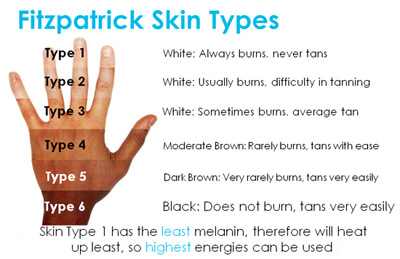- Home
- Injections
- Laser Treatments
- Specialties
Specialtiesview all
- Other Treatments
- Before After Photos
Before After Photosview all
- Contact Us
- Doctor And Staff
- About Celibre
- Blogs
This is a question that we hear daily from patients like you. Although you might think we get tired of giving the same answer over and over, we don’t. Our goal is to provide our patients with the most accurate, up-to-date information about the conditions we treat and procedures we perform. We never tire of helping patients like you choose effective, life-changing treatments that suit their preferences, lifestyles and budgets! All that to say our answer is yes; however, there are a few factors that must be considered:

Experience of the laser practitioner: We’re not just talking about credentials here. In many U.S. states and countries around the world even, aestheticians and “laser technicians” can perform laser hair removal. And trust us when we say that a licensed MD can injure, burn or even scar a patient with a laser just as easily as someone with far less formal education under their belt. The key is: what is their laser hair removal experience. The more laser procedures someone has performed, the more familiar they are with the skin’s reaction to the laser, the settings that are necessary and the clinical judgement needed to do a safe and effective job. In our opinion, someone with a solid year of laser hair removal experience will likely have a well-rounded, real-world education with their device to be able to deliver safe and effective results.
Training: Laser training shouldn’t begin and continue with unsuspecting patients. Unfortunately, some laser practitioners get very little training. We believe that at a minimum, training should include at least eight hours of supervised work that includes use of the laser on multiple different patients with varying skin types (colors) for a practitioner to have a basic skill set. Ask before you let someone treat you. Ideally, someone with at least two years of laser hair removal experience themselves, employed or affiliated with a different, external facility, should train your practitioner.
Laser technology: While you might think that there lots of different lasers used for laser hair removal, there are only four different devices. The diode laser (810 nanometer wavelength), the alexandrite laser (755 nanometer wavelength) and the Nd:Yag (1,064 nanometer wavelength) are the top three laser choices. The fourth is an Intense Pulsed Light device, or IPL. We consider the first three to all be effective and safe options for permanent laser hair removal. The IPL is less so (although it is commonly used) because it isn’t really a laser. IPLs use multiple wavelengths of light, instead of just one and have a harder time getting rid of medium and fine hair.
The 755 nm, 810 nm, and 1064 nm lasers provide targeted treatment for the melanin lining the hair follicles. These three wavelengths of light are designed to absorb hair, enabling the laser’s energy to selectively damage the follicle while leaving the skin unharmed.With an IPL, there are multiple wavelengths of light that go into the skin. In order for the ones that damage melanin in the follicle to be powerful enough, you have to increase the overall energy of the treatment. This significantly increases the risk of unwanted side effects and does not guarantee that the follicle will sustain enough damage for permanent hair removal. That’s right. With IPL, you increase the risk of unwanted side effects without getting the permanent hair removal you want. This is why we do not recommend IPL for permanent hair removal.
You may wonder why there are three other wavelengths used then? The answer is that each wavelength is best suited for unwanted hair on different skin types (colors). The diode (810 nm) and alexandrite (755 nm) work well on lighter skin types—Scandinavian up to some Asian or Hispanic heritages. The Nd:Yag (1064 nm) is ideally suited for darker skin types, such as African and African-American.
Choosing a facility to provide safe laser hair removal
Often practices that use IPL can do treatments very quickly because of the size of the laser head. This means IPL treatments are often cheaper. The problem lies in the fact that IPL cannot achieve the same high percentage of permanent hair removal. Consequently, in the end, many patients have to undergo repeat laser hair removal treatments if they had previously used IPL. Try to find a practice that offers laser treatments for your skin type to maximize the chance of getting a good result.
Other practices may offer very little laser training for nurses or rely on other staff to train new employees because it’s convenient and free. Unfortunately, practices that skimp on training and use a one-size-fits all approach may not have the experience or ability to customize treatment settings that are right for you. All this amounts to an increased risk of side effects and/or ineffective treatments.
Make sure your laser hair removal practice has a device that’s appropriate and safe for your skin type. Ask what kind of training your laser practitioner has and how many treatments he/she has performed in the past. Lastly, make sure you are a part of your treatment plan. A facility that doesn’t take the time to educate you on your condition and explain the treatment process likely cares very little for your safety and satisfaction.
While it may a bit more work for you up front, finding the right office for laser hair removal is worth it in the end.

